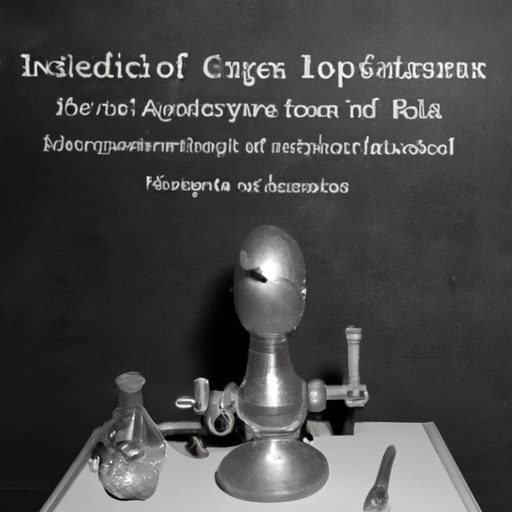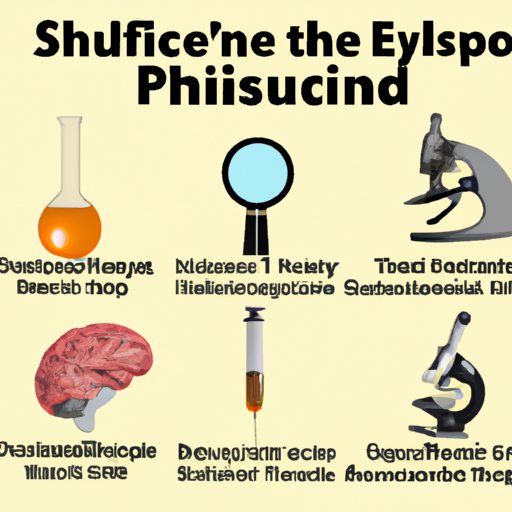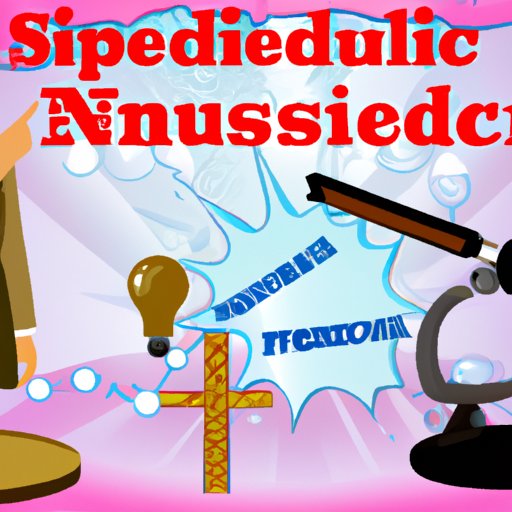Introduction
Pseudo science is a term used to describe theories or practices that appear to be scientific but lack any real evidence to back them up. It is often difficult to distinguish between what is real science and what is pseudo science, as both can appear similar on the surface. This article aims to provide an overview of pseudo science, exploring its history, examining famous examples, looking at the relationship between pseudo science and popular beliefs, and discussing how to identify it in everyday life, as well as its impact on society.

Exploring the History of Pseudo Science
The concept of pseudo science has been around since ancient times. In Ancient Greece, for example, astrology was considered a form of science, even though it lacked any real evidence. Similarly, alchemy was believed to be able to turn base metals into gold and silver, although this too was later disproven. As the scientific revolution progressed, however, pseudo sciences such as astrology and alchemy were increasingly discredited.

Examining Famous Examples of Pseudo Science
Today, there are countless examples of pseudo science in popular culture and academia. For instance, some people believe in the power of crystals and homeopathy, which have no scientific basis. Similarly, some people believe in the power of “energy healing”, despite the fact that no scientific evidence exists to support these claims. Additionally, some people believe in conspiracy theories, such as those claiming the moon landing was faked, despite the overwhelming evidence to the contrary.
The Relationship Between Pseudo Science and Popular Beliefs
Pseudo science can have a powerful influence on popular beliefs, especially when it is presented in a convincing manner. People may be swayed by the claims of pseudo scientists and adopt their ideas without questioning them. This can lead to a false sense of security and can prevent people from seeking out more reliable sources of information.
Furthermore, pseudo science can be used to manipulate public opinion. For example, pseudoscientific studies have been used to argue against climate change, despite the overwhelming scientific evidence in favor of it. Such tactics can be used to stifle debate and sway public opinion in favor of certain causes.

How to Identify Pseudo Science in Everyday Life
It can be difficult to distinguish between what is real science and what is pseudo science, as both can appear similar on the surface. However, there are some common characteristics of pseudo science that can help you identify it. For example, pseudo science often relies on anecdotal evidence or personal experiences, rather than scientific data. Additionally, pseudo science often lacks peer review and is not subject to rigorous testing or analysis.
In addition, pseudo science is often presented in a way that makes it sound convincing. Pseudo scientists may use language that appeals to emotion and make sweeping statements with little or no evidence to back them up. They may also cherry-pick data to support their claims and ignore any contradictory evidence.
Finally, it is important to remember that pseudo science is often based on outdated or disproven theories. Pseudo scientists may be resistant to new ideas or research that contradicts their claims. If someone is unwilling to consider new evidence or alternative theories, it is a sign that they may be engaging in pseudo science.
The Impact of Pseudo Science on Society
Pseudo science can have both positive and negative effects on society. On the one hand, it can spark interest in science and encourage people to question accepted ideas and theories. On the other hand, it can lead to false beliefs and a distrust of genuine scientific research.
For example, pseudo science can be used to discredit legitimate scientific research. This can lead to a lack of trust in science and can prevent people from making informed decisions about their health, environment, and other important issues. Additionally, pseudo science can lead to false beliefs that can be dangerous, such as believing in unproven treatments for serious illnesses.
Conclusion
In conclusion, pseudo science is a term used to describe theories or practices that appear to be scientific but lack any real evidence to back them up. It has been around since ancient times and can have a powerful influence on popular beliefs. Additionally, there are some common characteristics of pseudo science that can help you identify it. Finally, pseudo science can have both positive and negative effects on society.
Overall, it is important to be aware of pseudo science and to be skeptical of any claims that lack evidence. By doing so, we can ensure that we are making informed decisions based on facts, rather than false beliefs.
(Note: Is this article not meeting your expectations? Do you have knowledge or insights to share? Unlock new opportunities and expand your reach by joining our authors team. Click Registration to join us and share your expertise with our readers.)
